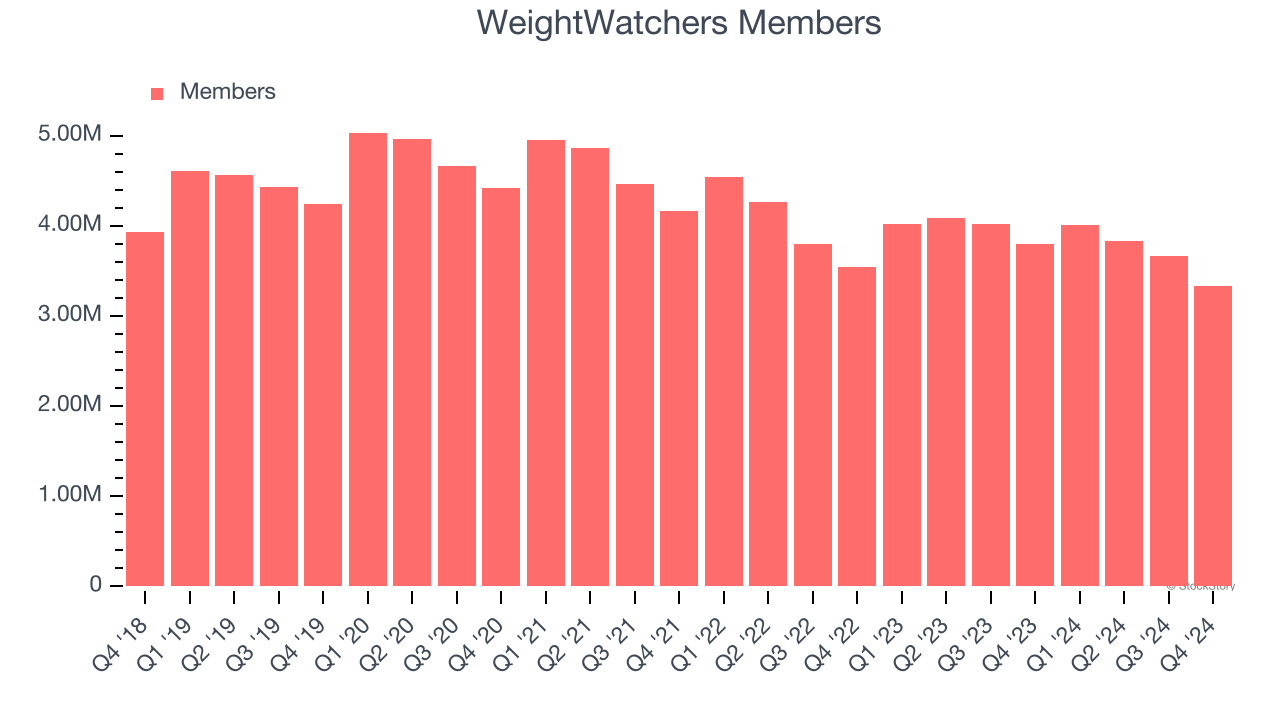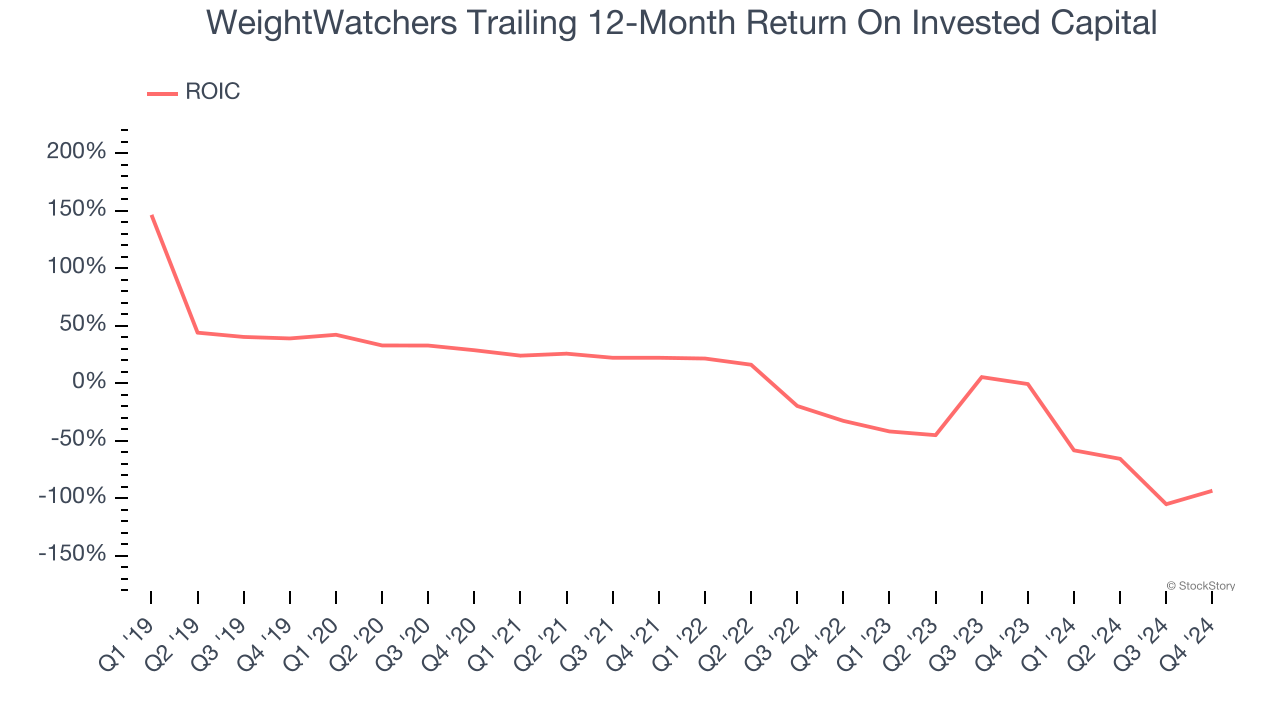
WeightWatchers has gotten torched over the last six months - since November 2024, its stock price has dropped 67.6% to $0.31 per share. This might have investors contemplating their next move.
Is now the time to buy WeightWatchers, or should you be careful about including it in your portfolio? See what our analysts have to say in our full research report, it’s free.
Why Do We Think WeightWatchers Will Underperform?
Even with the cheaper entry price, we're sitting this one out for now. Here are three reasons why you should be careful with WW and a stock we'd rather own.
1. Decline in Members Points to Weak Demand
Revenue growth can be broken down into changes in price and volume (for companies like WeightWatchers, our preferred volume metric is members). While both are important, the latter is the most critical to analyze because prices have a ceiling.
WeightWatchers’s members came in at 3.34 million in the latest quarter, and over the last two years, averaged 3.8% year-on-year declines. This performance was underwhelming and implies there may be increasing competition or market saturation. It also suggests WeightWatchers might have to lower prices or invest in product improvements to grow, factors that can hinder near-term profitability. 
2. New Investments Fail to Bear Fruit as ROIC Declines
ROIC, or return on invested capital, is a metric showing how much operating profit a company generates relative to the money it has raised (debt and equity).
We like to invest in businesses with high returns, but the trend in a company’s ROIC is what often surprises the market and moves the stock price. Unfortunately, WeightWatchers’s ROIC has decreased significantly over the last few years. Paired with its already low returns, these declines suggest its profitable growth opportunities are few and far between.

3. Short Cash Runway Exposes Shareholders to Potential Dilution
As long-term investors, the risk we care about most is the permanent loss of capital, which can happen when a company goes bankrupt or raises money from a disadvantaged position. This is separate from short-term stock price volatility, something we are much less bothered by.
WeightWatchers burned through $17.56 million of cash over the last year, and its $1.48 billion of debt exceeds the $53.02 million of cash on its balance sheet. This is a deal breaker for us because indebted loss-making companies spell trouble.

Unless the WeightWatchers’s fundamentals change quickly, it might find itself in a position where it must raise capital from investors to continue operating. Whether that would be favorable is unclear because dilution is a headwind for shareholder returns.
We remain cautious of WeightWatchers until it generates consistent free cash flow or any of its announced financing plans materialize on its balance sheet.
Final Judgment
WeightWatchers falls short of our quality standards. Following the recent decline, the stock trades at 0.2× forward EV-to-EBITDA (or $0.31 per share). While this valuation is optically cheap, the potential downside is huge given its shaky fundamentals. There are more exciting stocks to buy at the moment. We’d recommend looking at the Amazon and PayPal of Latin America.
Stocks We Would Buy Instead of WeightWatchers
Market indices reached historic highs following Donald Trump’s presidential victory in November 2024, but the outlook for 2025 is clouded by new trade policies that could impact business confidence and growth.
While this has caused many investors to adopt a "fearful" wait-and-see approach, we’re leaning into our best ideas that can grow regardless of the political or macroeconomic climate. Take advantage of Mr. Market by checking out our Top 5 Strong Momentum Stocks for this week. This is a curated list of our High Quality stocks that have generated a market-beating return of 176% over the last five years.
Stocks that made our list in 2020 include now familiar names such as Nvidia (+1,545% between March 2020 and March 2025) as well as under-the-radar businesses like the once-micro-cap company Kadant (+351% five-year return). Find your next big winner with StockStory today.
